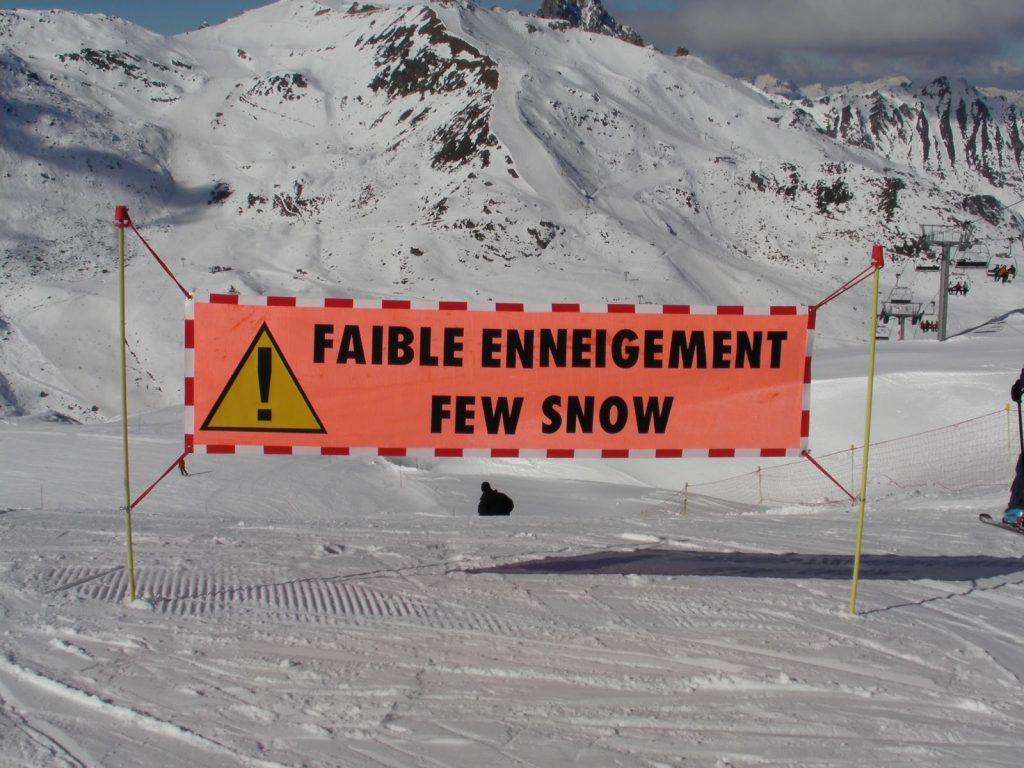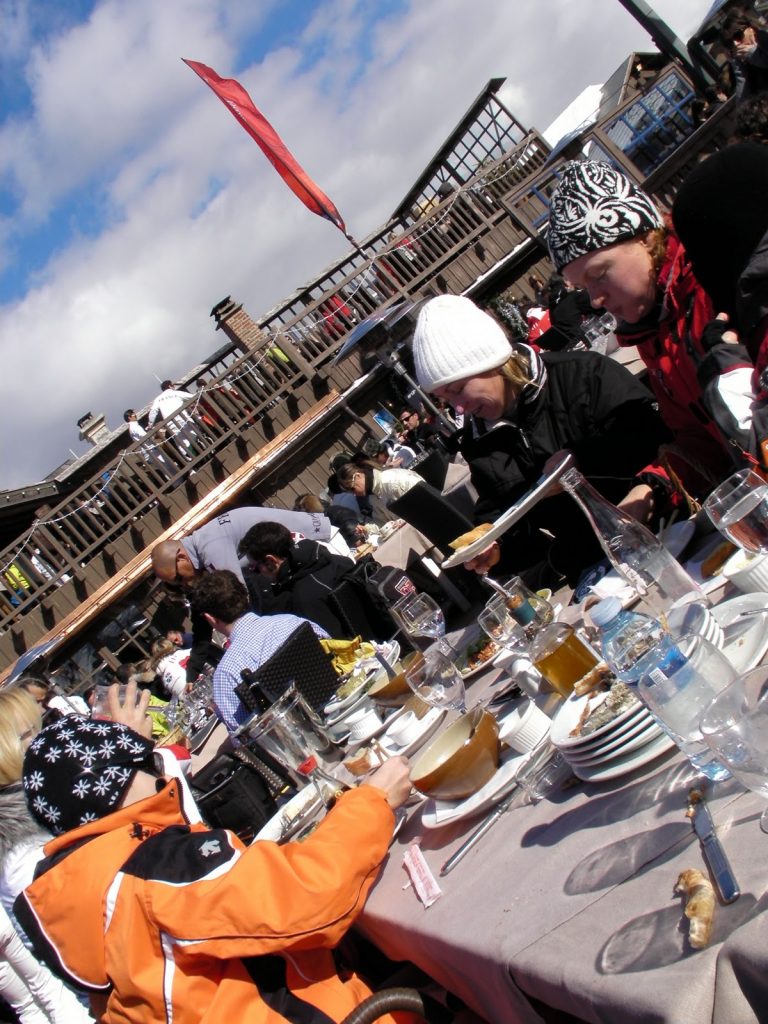Day Five
Dynamics Special
Having had everyone working on pivoting up until now it was time to go to work on our old favourite “dynamics” again. We have worked on pivoting simply because carving has been out of the question with crowded icy slopes everywhere and no race course available that is free from the clutches of the ESF communist regime. Timothy needed to work on dynamics so as to avoid his “free fall” flights on the steeps. Liliana needed to work on dynamics to try to get rid of her stem. Rodian needed to work on dynamics to be able to flow better in the bumps, use his poles and to avoid sitting too far back. Dynamics is not just for carving and “inside edge” skiing – it is the number one ingredient in all good skiing. Most skiing faults can probably be traced to a miss-perception regarding dynamics.
Liliana & Timothy
Liliana acts as my translator for Timothy. When he says he doesn’t understand anything it’s probably nothing to do with the translation – some of the issues regarding dynamics are very hard to understand.
Feeble translation…
First exercise of the morning was the scary “lower ski pivot”. That is pivoting with the downhill ski. This requires a good support from the ski pole all the way around. Liliana’s trouble with stemming takes place during the middle of the turn so she is starting off the turn fine but then loses control later. It helps to understand what is happening in the second part of a turn – after the fall line. The skier’s job is to fall over and the ski’s job is to bring the skier back up. Control and decision essentially remain with the skier – but the skier only has this choice if he/she is aware of it. Liliana has for a long time understood that she has to fall over into the turn – but from that point onwards the rest appears to be unclear. The ski is VERY powerful at bringing people back up. You can almost calibrate a skier’s development by their ability to extend their dynamic range – how far they are able to fall over. Weaker skiers cannot fall over very much. After the fall line the power of the ski grows enormously – there is greater speed, the ski acts against gravity, the edge angle on the snow increases. The result is that the ski can quickly take over control and spit the skier out of the turn – without the skier having a clue that this is what is happening. The aware skier knows that from the fall line there has to be an increased effort to “fall into ” the turn, towards the snow and towards the centre of the turn. This is why Upper/lower body separation is essential in shorter turns – because it allows the body to drop into the turn in ways that it cannot if the body remains “square” to the skis by just following them around. There is then an interplay that takes place with the ski loading up with even more power as the skier refuses to give in to it. This power can then be exploited to launch the skier back up and out of the turn over the skis and into the next one. If someone is not aware of this powerful effect of the skis then they tend to be unable to close a turn properly – which is what was obvious with Liliana working on the lower ski pivot. She quickly improved however until we ran out of suitable terrain and had to get on with skiing. I’m not sure how much Timothy understood but he did have a go at copying the exercises.
Timothy still managed a classic free fall dive on the steeps and it’s not just stemming or errors in pivoting that cause this – it’s a failure of dynamics both in and out of the turn. Part of this is caused by simple apprehension – but most is down to technique. Timothy can’t be taken any place where a slide could be dangerous until this is sorted out. He was wearing a small backpack with shiny nylon material and I asked for this to be removed at lunch time as it potentially could make him slide even more if he was on his back.
Cap Horn in Courchevel (The ship was rocking after being hit by a big wave)
Rodian
Rodain didn’t know how dynamics could be used in the bumps – but it is a seriously important part of bumps skiing. It’s often said in bumps skiing the the upper body should remain motionless – but there is a powerful illusion at work here. If the skis go left and the body is made to go right then the body will remain motionless. If nothing is done with the body then it will go left and not appear to be motionless at all. There is very active body movement in the bumps and that is why the pole plant is essential. Although a bumps turn is a pivot very strong dynamics are required. There is not the speed that the skier would have in carving so to compensate for this and to permit the dynamics (the falling of the body downhill across the skis) a strong pole support is used in place of a strong inside ski edge and angular acceleration. Rodian took a while to understand the purpose of the exercises and although he managed to move the body well in the big bumps he would quickly abandon this and return to upright and less controlled skiing. What Rodian doesn’t realise yet is that he might be able to ski fast now without technique but if he works on technique; dynamics and edge control, then eventually he will be very much faster if he wants to be – or very much more in control when the day comes that he weighs twice as much and his skis are twice as long.
We had a brief look at Jeorge Joubert’s “Surf Technique” but I don’t think that Rodian followed this and I didn’t stay for long on the subject. Basically the bumps turn is started with both skis on the uphill edges and both knees pointing out of the turn while the body moves into the turn assisted by pole support. This delays the outside ski even longer in getting onto the inside edge and the knees are pulled inwards only on after passing the fall line. This improves dynamics in the bumps because it makes the skier much more supple. The technique was first observed by studying Ingemar Stenmark in slalom. He used this to conserve speed in soft snow. Perhaps we will come back to this tomorrow for a while.


